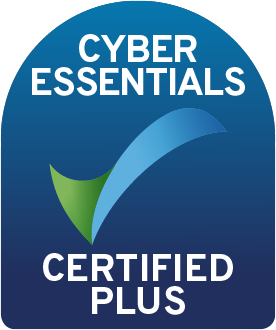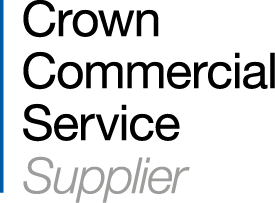Creating compliance e-learning in your LMS is a crucial task for UK organisations facing evolving regulations such as GDPR. Learning and development (L&D) teams must ensure staff not only complete mandatory training but also understand how to apply it in real-world situations. Whether you're using Moodle, Totara Learn, or another platform, building compliance training programmes that are engaging, accessible, and legally sound is essential.
Thanks to Moodle’s open-source nature and extensive customisation options, you can tailor your LMS to meet specific UK compliance and regulatory requirements. This includes adjusting the interface, enabling or disabling features, and integrating third-party tools to suit your organisation’s unique needs. Below, we share six practical tips to help you create effective compliance e-learning within your LMS while maximising Moodle and Totara's powerful capabilities for 2025 and beyond.
TL;DR: 6 quick tips for better compliance e-learning
Need to meet UK compliance standards with your LMS? Whether you're using Moodle or Totara, here are 6 key tips:
-
Use native tools to build and update content easily.
-
Keep it short with micro-learning modules.
-
Add scenarios for real-world decision-making.
-
Foster collaboration through forums and shared resources.
-
Mix up assessments to improve retention.
-
Automate recertification with reminders and tracking.
Stay compliant, reduce admin, and engage your learners in 2025 and beyond. Contact Hubken and discover our award-winning compliance LMSs.
1. Use native LMS tools to build your content
Moodle and Totara Learn come equipped with powerful authoring tools that let you create and manage compliance training internally. Using native resources, such as pages, quizzes, assignments, and multimedia, ensures your content remains under your control and can be updated quickly as regulations evolve.
Outsourced SCORM packages might seem like a shortcut, but they can be costly and inflexible. Native content allows for tailored scenarios, multimedia-rich lessons, and seamless updates that reflect policy changes or new legislation, which is crucial for staying compliant in 2025.
If you’re not familiar with course creation in Moodle or Totara, training is a great first step to ensure you maximise the benefits of the tools available.
2. Break compliance content into bite-sized micro-learning modules
Micro-learning is more engaging and accessible, especially for employees who need quick refreshers or have limited time. Moodle’s flexible resource types allow you to deliver short, focused modules, such as videos, infographics, or quick quizzes, that learners can access on demand.
By structuring compliance training in smaller chunks, you improve retention and make it easier for employees to stay up-to-date with evolving UK compliance requirements.
Creating content directly in your LMS can help to create resource-based courses, where learners can complete the training but also have easy access to a specific resource at their time of need. Many workers are not office-based and will find it difficult to set aside much time for training, so keeping your content short will help your learners access the content they need.

Both Moodle and Totara offer a range of options for creating and sharing short-form content. Easily construct web pages, book resources and blog posts for quick information, or simply drag and drop media and infographics, tagging each item for quick access.
With a micro-learning strategy, the key is little, but often. Totara’s Program feature gives you the ability to group courses together and send scheduled e-mails with customisable messages. This could be used to send a daily e-mail encouraging learners to log on and access the latest material in the programme.
3. Incorporate scenario-based learning for real-world application
Using scenarios in compliance training is a great way for learners to act out the decisions they may need to make when faced with a real-world compliance issue. You can present options to decide on and provide a safe environment to practice and see the consequences of their action. This is great for high-risk compliance issues and helps to embed the knowledge, as you are showing them why a certain decision is the wrong one.
Moodle's Lesson activity is ideal for scenario-based training. This allows learners to choose actions and receive immediate feedback based on their decisions, simulating real-life compliance challenges. These interactive exercises deepen understanding by showing consequences of choices, which is especially valuable for high-risk areas such as data protection, workplace safety, and anti-bribery regulations.
4. Encourage social learning and peer collaboration
Compliance topics can sometimes feel dry, but fostering learner interaction boosts engagement and helps embed key concepts. Moodle’s forums, glossaries, wikis, and chat tools enable learners to discuss compliance issues, share experiences, and collaboratively build resources like FAQs.
Forums can be used to evaluate learners' understanding of compliance topics. You could ask learners to give examples of what they consider to be a breach of policy or pose a question to the wider group to start a conversation. Learners won’t see other responses until their own answer has been posted, so you are guaranteed honest answers and a variety of input from your cohort.
Get your learners collaborating and creating their own content by adding entries to a course glossary, where they can also rate and comment on other entries. They could be building a collaborative list of compliance FAQs or situations they have experienced and how they worked through them. This glossary then naturally doubles up as a fantastic ongoing resource for your learners to call on in times of need.
Encouraging peer input also reveals how policies are interpreted in practice, allowing trainers to address misconceptions and foster a culture of compliance throughout the organisation.
5. Diversify assessments to enhance knowledge retention
Avoid relying solely on multiple-choice quizzes, which can encourage guessing and superficial learning. Use a variety of question types and assessment methods, including Moodle’s Certainty-Based Marking (CBM) feature, which asks learners to indicate how confident they are in their answers.
This type of questioning requires a learner to answer a question, then say how sure they are of their answer.
The points for each question range from +3 to -6, so there’s a lot to consider for a quick guess. Correct answers with a low certainty don’t achieve the fullest marks possible (1 out of 3), whilst incorrect answers with a high certainty attract a penalty of -6. With a leaderboard displaying the results, you may think twice about what you know and don’t know!
With the right feedback, this assessment can help improve the learning outcomes, as it rewards honesty, encourages further study of the material, and, with practice, leads to more confident and competent learners. This can be used to great effect in a compliance course, as your learners will be really thinking about how they know the correct answer, leading to a more informed, compliant workforce.
6. Keep compliance training current with recertification and reporting
Compliance training often requires employees to complete certifications within a specific timeframe—and many of these certifications have expiry dates. That means your LMS needs to support both initial certification and ongoing recertification.
With tools like Totara’s Certifications feature, you can build training programmes that automatically reset after a defined period, ensuring learners retake the course or a refresher version before their certification lapses. Your LMS can also send automated notifications to remind learners when their current certificate is due to expire, reducing administrative workload and helping you maintain 100% compliance across the workforce.
To keep training relevant and avoid repetition fatigue, you can define different learning paths for recertification, for example, offering a shorter, micro-learning version in year two. Regularly updating your compliance content also ensures alignment with the latest UK regulations, while built-in reporting tools make it easy to track completions, monitor gaps, and prepare audit-ready records.
Making training relevant to your learners’ experience and current company practices will be appreciated by your learners and help improve the overall engagement and satisfaction with the LMS.
About Hubken Group
Hubken Group partners with organisations to deliver compliance e-learning solutions tailored to their needs. We help automate training delivery, improve learner engagement, and integrate LMS platforms like Moodle and Totara with third-party tools, ensuring you stay ahead of UK regulatory demands in 2025 and beyond.
Ready to achieve compliance success? Get in touch with us today to get started and chat with one of our LMS experts.
Frequently Asked Questions
How do I ensure my compliance e-learning content meets UK legal standards?
Use Moodle and Totara's native authoring tools to build content that reflects UK legislation, and keep it updated regularly. Incorporate scenario-based learning and accessibility best practices, and make use of features like quizzes, consent tracking, and learner feedback to ensure full coverage and engagement.
How do you customise Moodle for UK compliance and regulatory training?
You can customise Moodle by adjusting its interface, enabling features like audit logs and user permissions, integrating policy documents, and adding UK-specific compliance content. Custom plugins and third-party integrations can also support GDPR, accessibility, and industry-specific requirements. Read our Moodle ultimate guide to find out more.
What makes compliance e-learning effective?
Effective compliance e-learning combines clear, up-to-date content with engaging delivery methods such as scenario-based learning, micro-learning modules, and interactive assessments. It should be easy to access, regularly updated to reflect legal changes, and designed to encourage real-world application, not just box-ticking.
How often should compliance training be refreshed?
Compliance training should typically be refreshed annually or in line with industry regulations. High-risk areas, like data protection or health and safety, may require more frequent updates. Using your LMS’s certification and notification tools helps automate this process and ensures ongoing compliance without additional admin overhead.
What UK industry certifications do LMS systems need to track?
UK LMS platforms must track compliance with various industry-specific and general standards such as SCORM for e-learning, British Standards for CPD, and Ofqual alignment for regulated training. They also need to track sector-specific compliance like CQC training in health and social care, GDPR data protection, and ISO standards.
How do learning platforms handle technical certification tracking for UK IT teams?
Learning platforms help UK IT teams stay compliant by streamlining technical certification tracking within a centralised LMS. These systems manage compliance-related training and automate key tasks such as tracking course completion, issuing reminders for upcoming certification renewals, and generating detailed reports on individual and team progress. By using an LMS such as Totara Learn to monitor technical certifications, organisations can ensure IT staff remain up to date with regulatory requirements and industry standards while reducing administrative burden.

Explore HubkenCore – our unique SaaS LMS offering
Ready to see how our new LMS bundled solution is revolutionising how you purchase an e-learning solution?
.jpg?width=1080&height=150&name=Slim%20blog%20CTAs%20(1).jpg)
-1.png?width=2835&height=394&name=Slim%20blog%20CTAs%20(6)-1.png)
-1.png?width=1080&height=150&name=Slim%20blog%20CTAs%20(3)-1.png)



